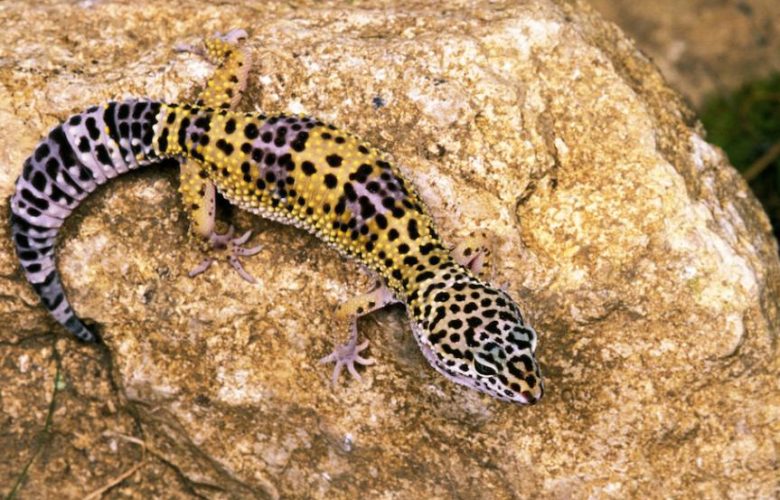Mothers seem to have a constant pastime – grumbling about their kids! This time, a viral TikTok video showed a mother complaining about having a leopard gecko as a pet for her son. She went on to state how she had become the primary caregiver for her son’s pet. Apart from the eyebrows (and questions) that it raised online, netizens seem to want to have one query over all others – how long do leopard geckos live? Well, the answer is – their average lifespan is 20 years, but it varies depending on multiple conditions.
What are those? How to maintain leopard geckos at home? What is the right diet for them? We have answers to all your queries right here! Let us give you the insights –
Table of Contents
How long do leopard geckos live?
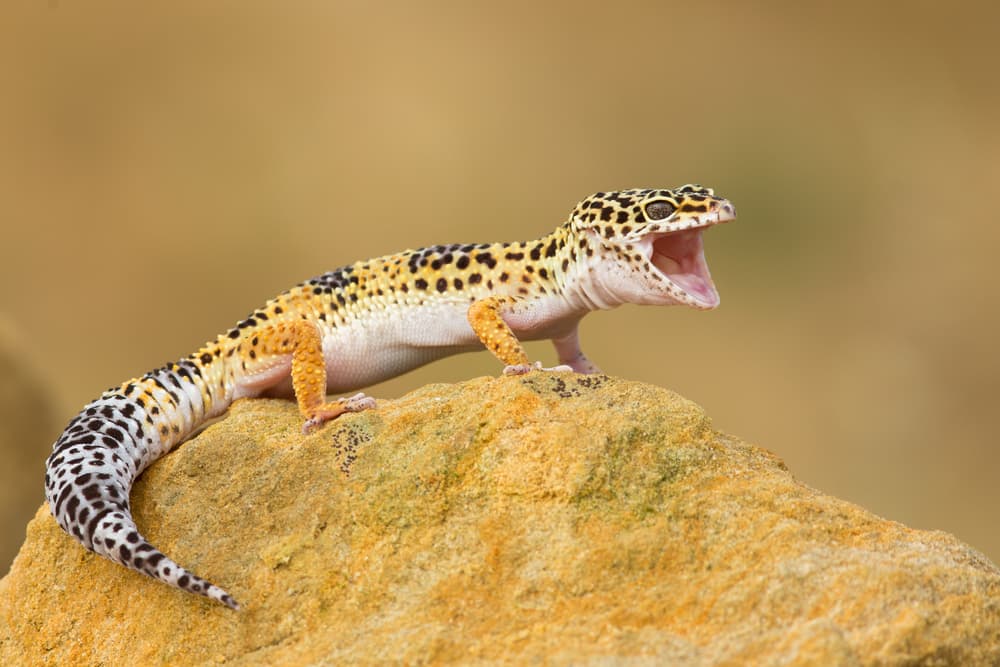
As mentioned above, leopard geckos live for an average of 20 years. However, there are a couple of factors to consider, and the life span metrics of the gecko change accordingly. For example, a pet gecko lives for 15-20 years. However, if it is a male gecko, it could live up to 25 years. The female geckos comparatively live for a lesser time, since they produce eggs which take up quite an amount of energy.
| TYPE OF HABITAT | TIME SPAN |
| PET LEOPARD GECKO | 15 – 20 years |
| MALE LEOPARD GECKO | 25 years (can live up to 28 years) |
| FEMALE LEOPARD GECKO | 10 – 15 years |
| WILD LEOPARD GECKO | 8 – 10 years |
Why do some leopard geckos live longer?
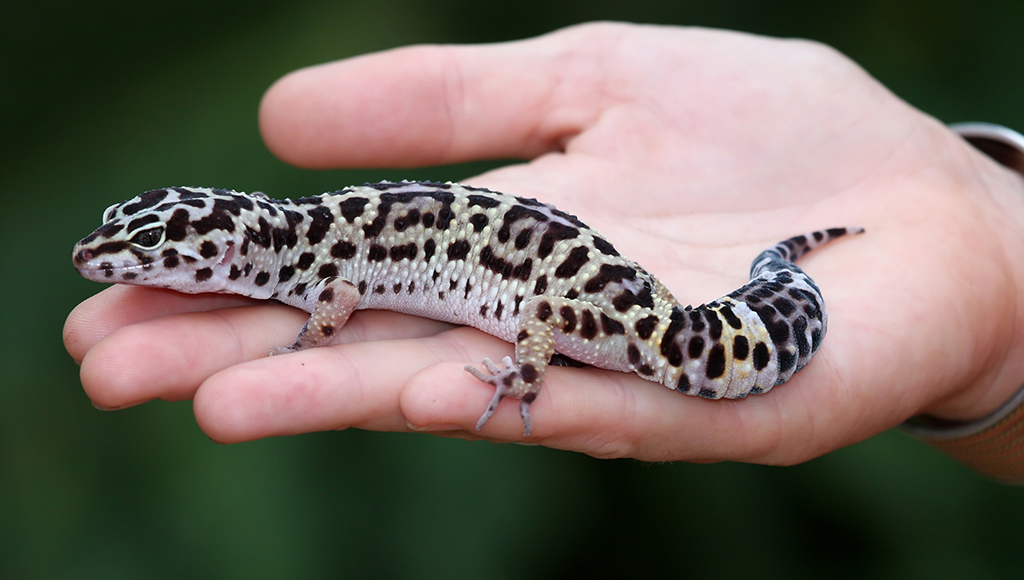
Leopard geckos live for an average of 15-20 years. However, there have been multiple scenarios, wherein some of the geckos have lived longer vis-a-vis the others. Why and how long do leopard geckos live, especially, some more than others, depends on –
The environment that it lives in
The environment that you put the leopard gecko in matters significantly. These are cold-blooded reptiles with specific requirements. During the day, the temperature must be set within 84-89 degrees F, and during the night, the temperature must be reduced to 71-77 degrees F. Also, you will require a hygrometer that keeps the humidity between 60-70%. Those leopard geckos that live a long life, are kept in these monitored environmental conditions.
Size and placement of the enclosure
The placement and size of the enclosure also contribute to the life span of leopard geckos. Ensure that the terrarium is within 15-20 gallons (suitable for up to 2 geckos) and the area is a low foot traffic zone. Adding a little sand to the enclosure and a handful of chosen plants, makes it more ‘homely’ for them.
Diet has a huge role to play
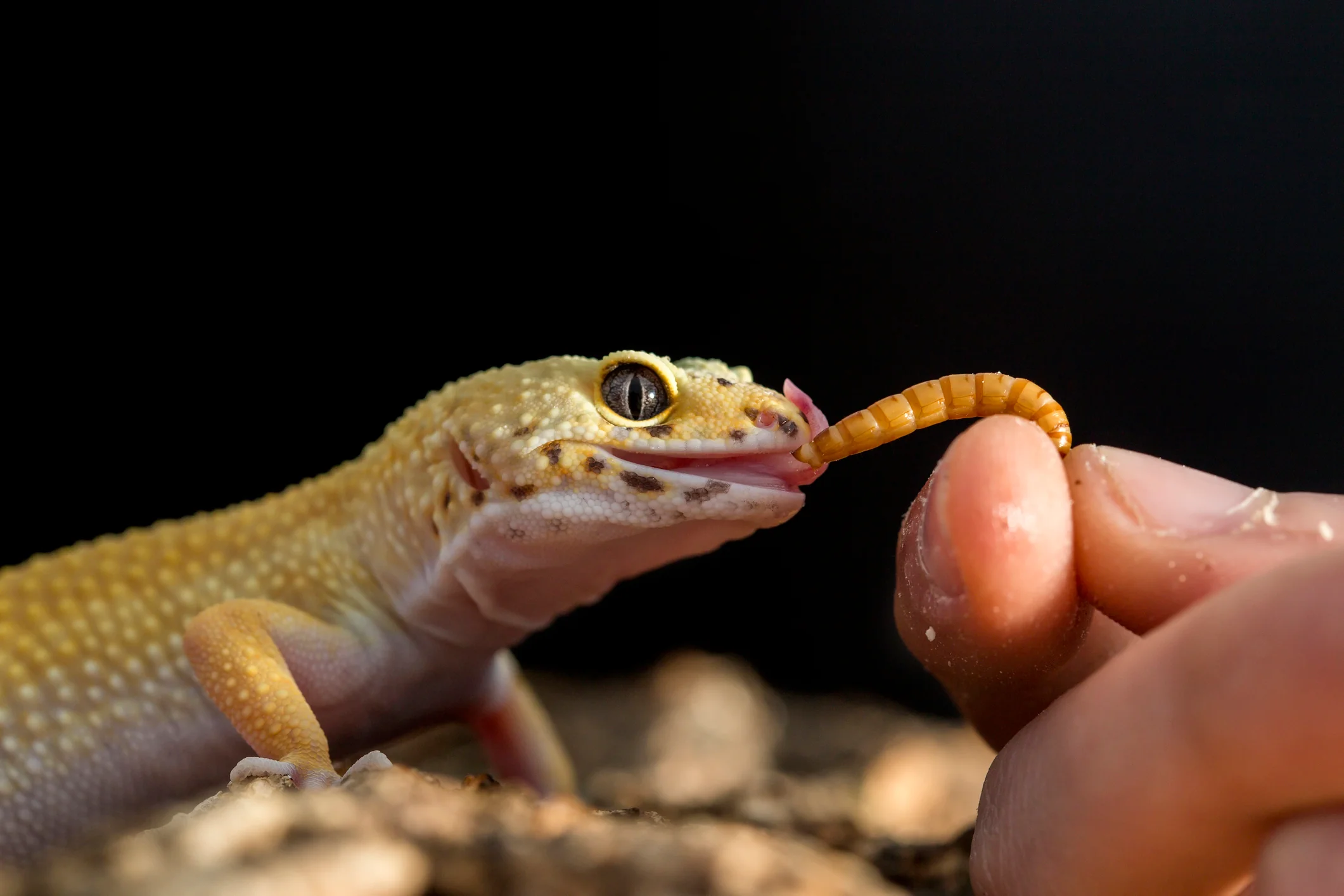
A leopard gecko needs a fulfilling diet packed with calcium and gut-loaded insects. When you see, one leopard gecko living for a longer period compared to another, rest assured – they are getting live insects (crickets, roaches, worms) and calcium and vitamin supplements. What’s more interesting is – that only 1 or 2 insects must be given at a time to garner maximum nutrition.
You must also note that – juvenile leopard geckos must be fed multivitamins (especially Vitamin D3) and calcium supplements every day. While the adults must be fed multivitamins every other day.
Proper healthcare is a must
Leopard geckos commonly suffer from medical ailments like – nutritional hyperparathyroidism, retained shed, respiratory issues, sand impactions, egg binding, Vitamin A deficiency, and diarrhea. Those geckos that live longer get better healthcare facilities.
These are some of the specified conditions under which certain leopard geckos live a longer life compared to others. So, if you are petting one, or intend to pet one, then take care of these factors. Assuredly, it will increase your leopard gecko’s life span.
What can shorten their life span?
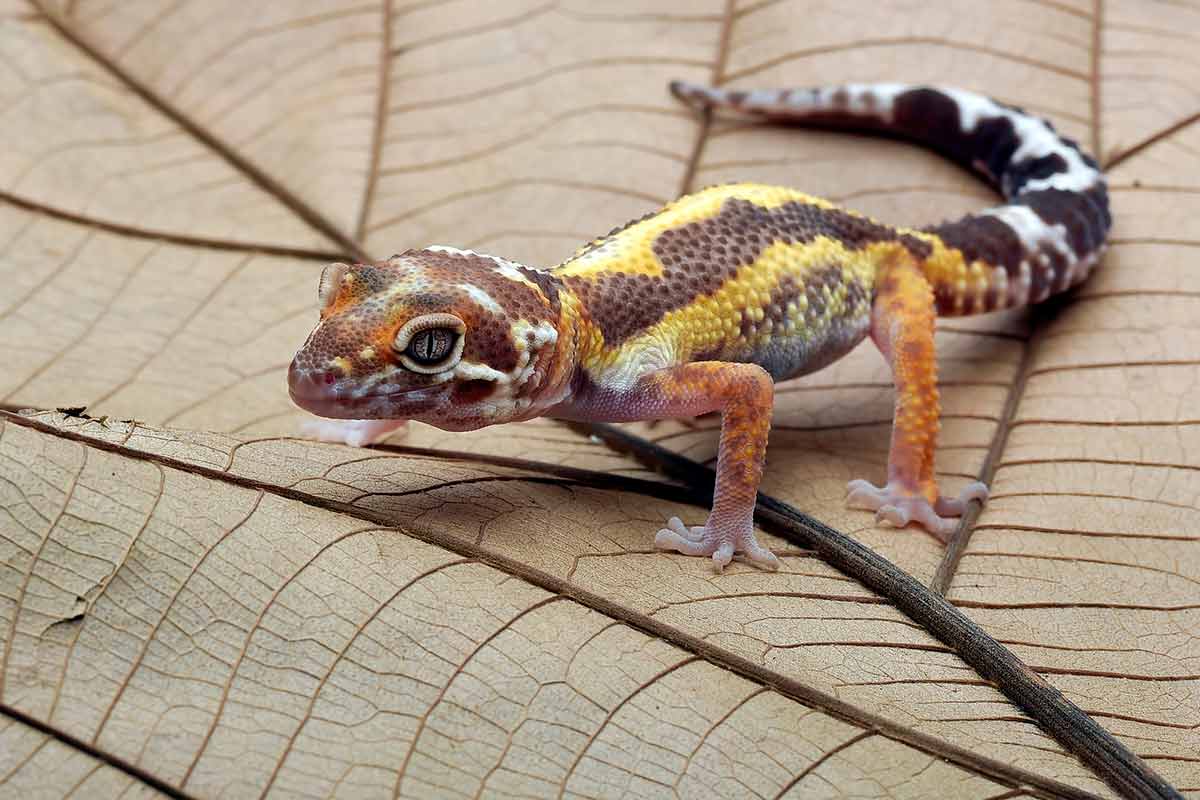
You have seen for yourself, the conditions that escalate a leopard gecko’s span of life. Now, let us make you aware of those conditions that inhibit their life –
- If you keep your gecko in a bright and high-stress environment, then that considerably reduces its time span. When a leopard gecko does not have a hideout, they face health issues like – hyperparathyroidism.
- For the unversed, geckos must not be fed any fruits or vegetables. They need worms and gut-loaded insects to survive.
- Do you know how long do leopard geckos live considerably depends on their ability to shed. They require a hide that has a minimum of 60% humidity since lower humidity causes dysecdysis ( abnormal shedding of dead outer skin).
- A low temperature can significantly harm your leopard gecko. The enclosure must have a gradient between 75-94 degrees F for it to survive well.
Quick Ways to increase lifespan of Leopard geckos
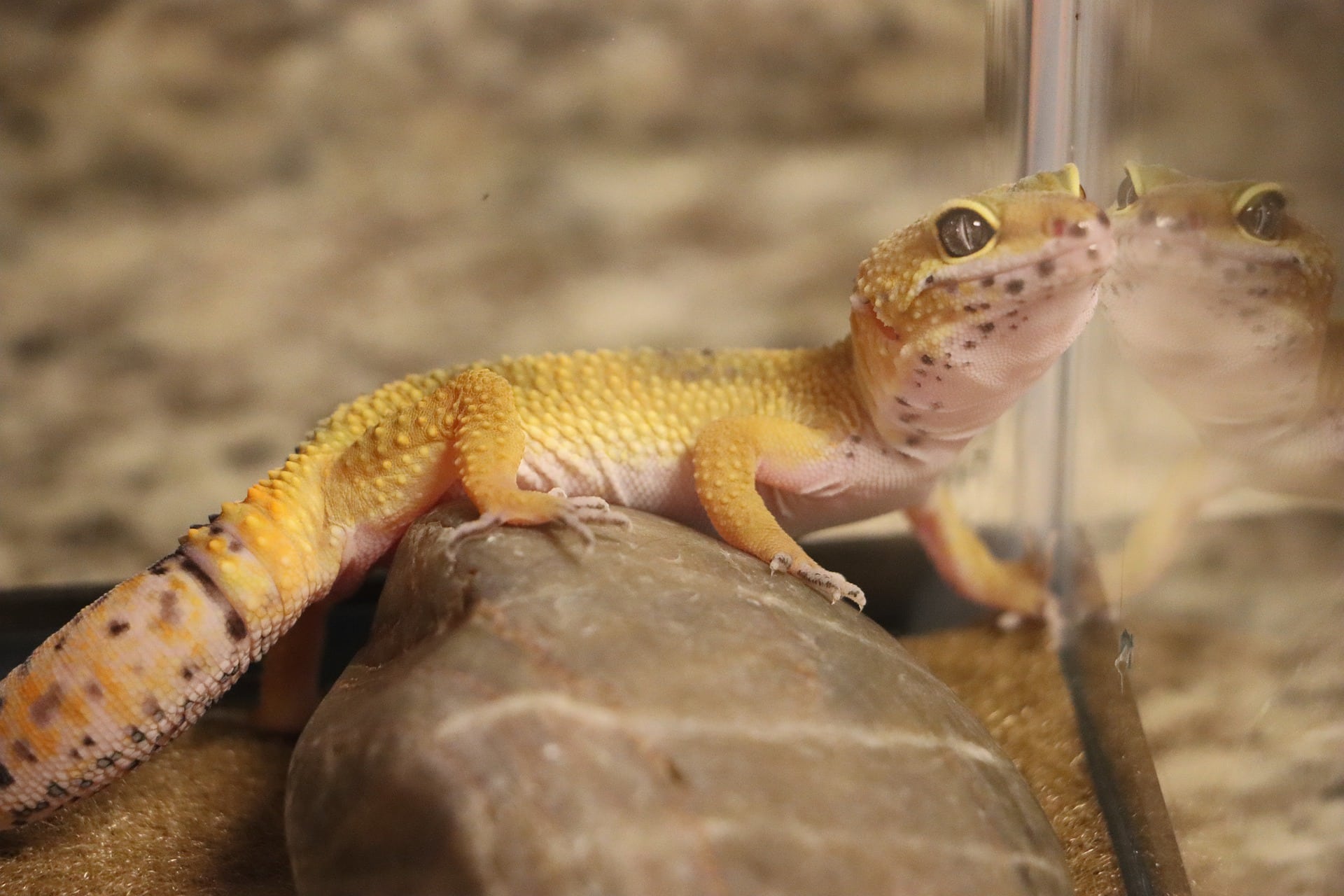
Keep these points in mind –
- Monitor your gecko’s health with regular veterinary exams (fecal parasite testing and bloodwork).
- Do not use any item that could cause a thermal burn to your pet. Monitor the parameters of the UV index meter, hygrometer, and thermostat daily.
- Make sure to remove the insects (fodder for the gecko) within 10-15 minutes of placing them. Otherwise, they will chew on your pet.
- Keep the tank clean with bleach solution, change UV bulbs every 6 months, and place shed boxes with sphagnum moss for better humidity).
Parting words
Leopard geckos are found in Afghanistan, Iran, Vietnam, Pakistan, and Northwest India. They are quite resilient creatures who have a fulfilled lifespan. Assuming you have read this article, you already know how long do leopard geckos live and the conditions that enhance or reduce their life span. Having said that, you must ensure that the specific conditions are fulfilled before you keep them as pets (they can be fantastic ones). If you still have some further queries, you can scroll down. For further updates like this, keep following this website.
Frequently Asked Questions
1. Are leopard geckos friendly?
Leopard geckos are sociable and friendly with their owners. However, it depends on how gently you treat them. They are docile in temperament and can have a roomie in their gallon tank. However, it is safe to not keep 2 male leopard geckos together since that could increase the chances of them fighting amongst themselves.
2. Are these reptiles sexually active?
During the time the leopard geckos are aged between 18-24 months and weigh up to 30 grams, they become sexually active. They remain active throughout their life time.
3. How to tell your gecko’s age?
The easiest way to tell your gecko’s age is by noticing its patterns. As your gecko matures, it will create new patterns in the process. While in the hatchling phase, the gecko will have dark bands over their tails, in the juvenile phase these bands will break up to reveal spots. These spots will continue to morph until the gecko is an adult.
4. Which plants are safe for geckos?
The plants that are safe for geckos are – cucurbits, elephant bush, climbing aloe, Yemen grape, and Swedish Ivy.
5. What is a leopard geckos natural habitat like?
The geckos naturally belong to rocky desert lands. Hence, the sandy backdrop with sparse vegetation, and minimal rainfall is an ideal set up for the gecko. If you wish to pet it, you may add a handful of sand to the gallon to make it more authentic.
Monalisa Mukherjee is a content writer, copywriter and editor with 4 years of experience. She has written for websites like Biography Talk, The Rich Net Worth, Contour Cafe, He And She Fitness and Fiction Pad. She is currently associated with a noted Digital Marketing Agency and specialises in writing press release, guest posts, articles on travel, entertainment, food recipes, celebs, lifestyle, tech, health, and fashion.

